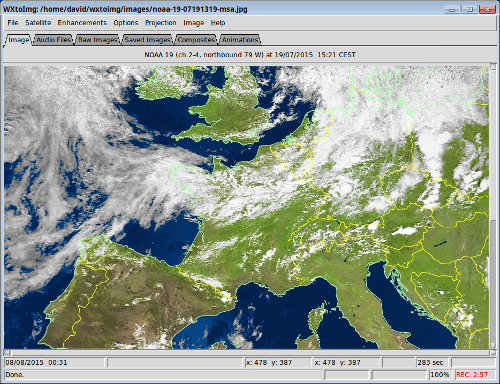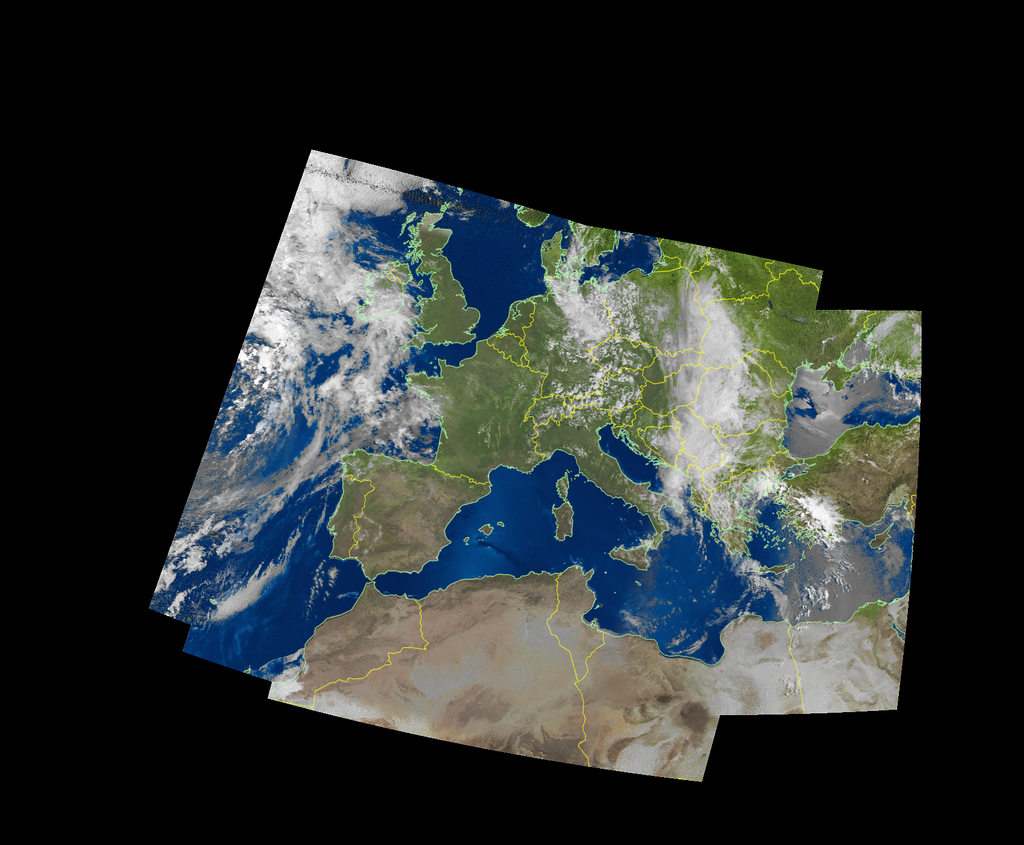QFH Antennas
(QuadriFilar Helix)






Tests carried out using NOAA satellite image acquisition software : WXtoIMG.

Assembly by WXtoIMG of two images received on 16/06/2023 with the antenna :





Analysis of the antenna by Jean-François IOSCA (F1LVO) :





Tests during ISS SSTV broadcasts (Expedition 52) :

SSTV images transmitted from the ISS and received live from the Albion plateau in the heart of the Alpes de Haute Provence between 20 and 24 July 2017 :
The 4/12 image from this ARISS series sent during Expedition 52 was received with a maximum elevation of just 8.6° above the horizon !
The manufacturing process is essentially the same for both versions of the antenna. Only the dimensions for the length of the tubes change in accordance with the frequency to which the antenna is to be tuned.

- Use a PVC sleeve with an internal diameter of 40mm.
- Drill through the sleeve twice with a 12 mm drill bit (the first hole must be perpendicular to the second).
- Tap the holes to screw in the cable glands.

- Glue the sleeve to a PVC tube with an external diameter of 40mm.
- Drill a Ø 6mm hole in the tube for the coaxial cable.

- Wrap the cable around the tube to make 4 turns at the base of the sleeve to form a balun.

- Use 4 cable glands with an internal diameter of 6 mm.

- Screw the cable glands onto the sleeve.


- Place two sleeves drilled through the bottom of the tube at the bottom of the antenna at the correct height as shown on the plan.

- You’ll need 6 aluminium rings 1m long with a diameter of 6mm and a tube with an internal diameter of 6mm to connect the top and bottom parts of the antenna.

- Fold four aluminium circles as shown in the photo above.

- Form a semi-circle and fold the ends so that they meet as shown in the photo above.

- Grab the two ends and pull one up and the other down to obtain a shape identical to the one in the photo above.

- Use a pair of electrical dominoes with an internal diameter to fit the 6 mm tubes from which you have removed the plastic.

- Using a hacksaw, cut the domino into two equal parts.

- Use the dominos to attach the core and braid of the coaxial cable to the antenna tubes.

- Make sure that each part of the cable is connected to two tubes that face each other and are not adjacent.

- Once the antenna is assembled, protect the top of the antenna from the rain.

- One possible solution is to use a yoghurt pot with the base removed.

- Then place the pot on the antenna.

